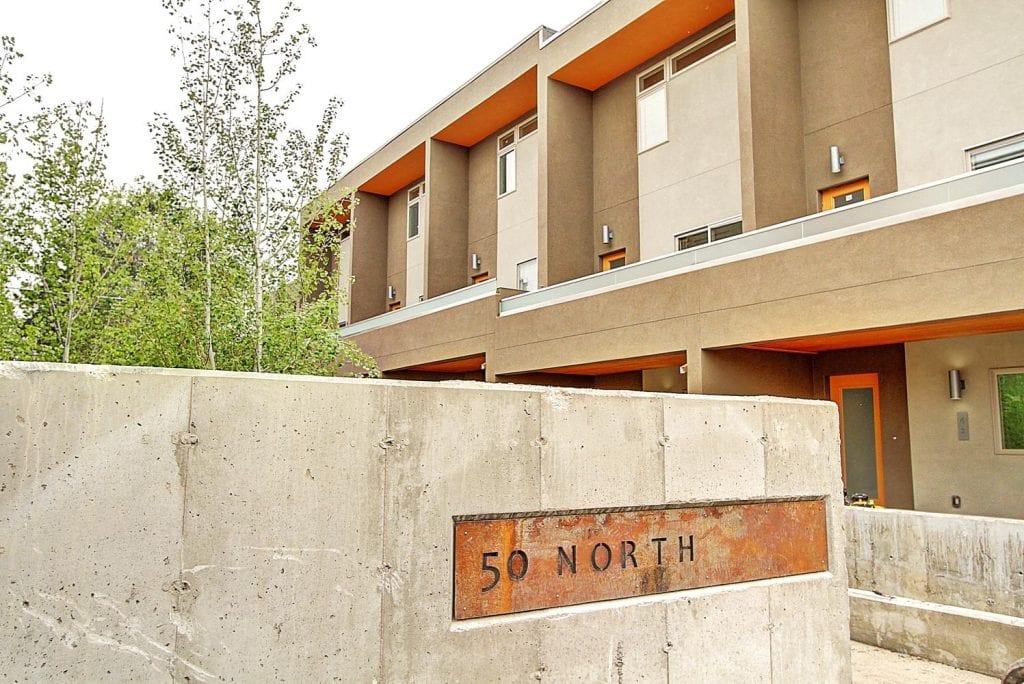SUSTAINABILITY

SUSTAINABILITY
EcoBroker Resources
Having the EcoBroker designation is a wonderful advantage for assisting my clients in saving money through energy efficiency and environmental choices. Their site also has a wealth of information, and I have included some information below. Check out www.ecobroker.com and their Facebook page for more information!
Rebates
Everyone always asks me about EE (energy efficiency) rebates. This is in constant flux, and Denver programs often offer some specials.
Xcel Energy rebate programs
City of Denver Rebate Programs
Energy-Efficient Appliances
Technology Snapshot & Benefits:
Both immediate and indirect economic savings can come from energy-efficient appliances such as refrigerators, horizontal-axis washing machines, clothes dryers, dishwashers, etc. Immediate and continuing savings accrue from lower utility bills for electricity and/or water. The performance levels of these appliances meet, and generally exceed, those of industry “standard” models. As a case in point, consider household refrigeration. By the late 1970s, refrigerators reached their most inefficient performance by requiring about 1750 kiloWatt-hours per year to operate. Modern energy-efficient refrigerators provide the same or better service at 450-550 kiloWatt-hours per year, and they are much quieter in operation.
Estimated Cost Savings:
The direct economic savings achieved by efficient appliances are a function of how much the appliance will be used, the performance level of the equipment being replaced, and local costs for utilities. When you replace older equipment, it is not uncommon for electricity consumption for that appliance to decrease by 50% or more. In general, if the appliance being replaced is more than 15 years old, and it is replaced with a state-of-the-art unit, you may expect utility savings of 20%-60% compared with the energy required by the previous appliance. Horizontal-axis washing machines typically save consumers 50% in both electric and water utilities. Additional savings come from reduced quantities of detergent.
Your monthly electrical bill is for all electricity used by all electrical loads in the building, so changing a single appliance will lower the bill, but in proportion to the amount of electricity formerly used by that appliance. If refrigeration represents 15-20% of your electric bill, a new refrigerator that is twice as efficient as the unit being replaced will lower your total bill by about 7-10%.
Any increase in initial cost is usually more than made up in monthly savings. See ACEEE Consumer Guide to Home Energy Saving for more detailed information on appliances and savings.
Issues:
Availability of the most energy-efficient appliances may be an issue. Sometimes the best equipment is in demand, which can mean that discounts and sale prices are either unavailable or of lower value. Over time, as manufacturers and suppliers clear inventories of less efficient models by offering discounts, expect the price of efficient appliances to come down as well.
Regional Issues:
Primarily, regional issues involve supply, delivery, and installation.
Installation (Getting It Done):
Be sure to price shop and to get two or three (or more) prices. Inquire about installation and removal of your old unit. For any refrigeration unit, be sure that the refrigerant will be removed and recycled responsibly. Refrigerants are very potent greenhouse gases and must be captured and contained. Shopping for price and availability will give you perspective on the true costs of equipment and installation in your area.
Source: EcoBroker.com Follow them on Facebook
Energy Saving Resources
- S. Department of Energy’s Office of Energy Efficiency and Renewable Energy: Energy Savers
- S. Department of Energy’s Building Technologies Program: Kitchen Appliances
- S. Department of Energy’s Building Technologies Program: Laundry Tips
- Energy Star®
9 Energy Efficient Cooling Tips
- White window shades, drapes or blinds actually reflect the sun away from your home. Shades or drapes can also provide additional insulation to help retain cool air and give your AC a break.
- Keep the cool in and the heat out! Replace leaky windows with ENERGY STAR® windows. Energy-efficient windows can reduce ultraviolet (UV) damage to carpet and furniture in your house while helping you save nearly $500 a year on your energy bill.
- Change your tune! Tune up your HVAC system annually and have a professional inspect your system to keep it running efficiently. Check out this handy maintenance checklist.
- Watch those filters! A dirty air filter can make your system inefficient or even damage your equipment. Change it every month!
- Don’t leave unfinished areas unattended! Seal and insulate heating and cooling ducts in attics, basements and crawl spaces.
- Become a big fan of attic fans! They draw cool nighttime air in and force hot air out. This makes it easier on your cooling system and, when combined with good insulation and ventilation, can even help protect your roof shingles.
- Get with the program – stat! By using a programmable thermostat properly (with the four pre-programmed settings) you can save about $180 every year in energy costs. Set your thermostat to 85 degrees when you’re out and about and 78 degrees when you’re chilling at home.
- Have it made in the shade. Because your central AC condenser works better at cooler temperatures, providing shade helps it work more efficiently and can knock about 3% off your cooling costs.
- Go ahead! Hug a tree! By positioning deciduous trees (the ones that grow leaves in the spring and lose them in the fall) to provide shade for your house in the summer, you can reduce your energy costs up to 8%. Plus, planting low shrubs around your house can reduce the amount of heat that radiates from pavement, sidewalks and patios onto the sides of your house, which can increase the temperature of your home and demand on your cooling system.
Driving Green and Keeping Green
From Golden Triangle Auto Care
Even if you are an ardent environmentalist not everyone can afford to get a new hybrid. Don’t let this get you down, though. There are many, many ways that you can make your driving experience greener and, in most cases, it might keep some green in your wallet.
CRUISE CONTROL
Any time you’re controlling the speed of your car you aren’t staying steady. There’s a constant adjustment through accelerations and
deceleration that can use more gasoline than necessary. When you’re driving on a long road trip, make sure to turn it on to avoid those costly accelerations and increase your gas mileage significantly.
COAST TO A STOP
Accelerating all the way to your stops is simply wasteful. Instead, slow down before you reach that stop sign or stoplight. Not only will it keep your car from accelerating all the way to the stop but it may also help you avoid accelerating from a dead stop. It may feel like you’re going too slowly to the light but it will still be red when you get to it (whether you’re wasting gas or not).
PLAN YOUR TRIP
It’s annoying to drive more than you have to. It’s annoying to be stuck in traffic and having a 20-minute trip turn into an hour-long excursion. Do you know what else it is? Wasteful. Not planning out your trips can cause you to drive around more than you should have or be stuck in traffic for hours on end which, obviously, wastes more gas than necessary hurting the planet and hurting your wallet.
TURN OFF THE AIR CONDITIONER
This may not be everyone’s favorite option on a hot summer day but turning off your air conditioner can ensure that you’re getting the most bang for your buck at the pump. By rolling down your window and opening up the vents you can keep cool and save a significant amount of gas and other expenses, environmentally harmful chemicals while extending the life of your air conditioner.
SHIFT QUICKLY
If you drive a manual transmission vehicle then you may know the importance of knowing when to shift so your car doesn’t stall. But, in addition to shifting to keep your car running, shifting as early as possible can prevent you from harming your transmission and wasting gas on unused power.
PROPER TIRE INFLATION
Making sure that your tires are properly inflated is not only the safe thing to do and increases the life of your tires, it also helps your gas mileage by allowing your car to work less to move more effectively. This works to increase your green driving habits and increases the green in your wallet.
CLEAN OUT YOUR CAR
Your car is a lot more like you than you may think. Just as you need more food to sustain yourself after hours of weight lifting and cardio, your car will need more to maintain itself if your car is overloaded with unnecessary items. Cleaning out your car won’t make the biggest difference in the world but, as they say, “a penny saved is a penny earned.”
Eco-Cycle our local go-to resource!
Keeping it Clean
In addition to implementing education, advocacy, and research programs, Eco-Cycle also operates the recycling center in Boulder County. Our well-informed and engaged community helps the recycling center produce very clean materials, and they are not landfilling recyclables or halting collections.
To help ensure your community’s recycling program is successful in the changing landscape of recycling, help spread the word to keep recycling streams clean! Now more than ever, proper sorting is essential, so make sure you check out your community’s recycling guidelines.
Denver recycles and composts only 26% of its waste, far behind the national average of 35%. Curbside recycling is available only to most single-family residents–not to multi-family properties or businesses–and only 15% of Denver residents have a composting collection.
Colorado’s recycling rate is stuck at 15%, well below the national average of 32%. One of the barriers to improving recycling in Colorado is our lack of recycling end markets—businesses that use recycled materials like paper, metal, and plastic to make new products. In our state, we bury over 5.8 million tons of recyclable materials each year that could have been sold for over $100 million to be made into new products.
Source: https://www.ecocycle.org/
Recycle Almost Anything
RECYCLE ALMOST ANYTHING! Check out this site to recycle all of your stuff!
Colorado Not Moving Fast Enough to Improve Recycling and Composting Goals
In the fifth year of the State of Recycling & Composting in Colorado Report, Eco-Cycle and CoPIRG found Colorado is failing to meet its recycling and composting goals and remains one of the 20 most wasteful states. In 2020, Colorado’s statewide recycling and the composting rate was just 15%, which is less than half the national recycling and composting rate of 32%. The recycling rate for plastics was even worse than the state average, with only 9% of plastic containers and packaging recycled statewide. In total, Coloradans buried over 5,900,000 tons of materials in the state’s landfills in 2020.
https://copirgfoundation.org/reports/cop/state-recycling-and-composting-colorado-2021
28 Businesses in Denver That You Should Be Supporting
https://www.thedenverear.com/sustainable-in-denver/
American Recycling Under Pressure
The crisis by the numbers:
30%: That’s the amount of recyclable materials the United States exports for processing.
50%: That’s how much of those exports go to China.
January 1, 2018: That’s when everything changed…
China’s “National Sword”
You may have heard about the challenges with recycling ever since China’s “National Sword” policy took effect the first of this year. China’s policy sets extremely high standards for contamination levels, accepting only the cleanest recyclables – a standard that many recyclers across the nation are finding hard to meet.
The effect on the nation and world
Now, recyclers are drastically limited as to the kinds of recyclables that can be exported. In some communities, materials are collected with no place to ship them. Some communities are considering halting recycling pick-up, and yet others are forced to send recyclables to landfills.
Recycling in America is in a precarious place these days.
https://www.katc.com/u-s-recycling-infrastructure-isn-t-meeting-demand
A global body estimates production of recycled plastics has quadrupled over the past two-plus decades, but recycled resins still make up only 6% of total plastic production.
Some Links to Help You Become Greener
12 Steps to Energy Efficiency and Affordable Zero Energy Homes
How To: Energy Efficient Heating and Cooling
Your Guide to Identifying & Unplugging Standby Power Appliances
The Homeowner’s Guide To Energy Efficient Mortgages
20 Ways to conserve water at home: A room-by-room guide
Eco-Friendly Cleaning Products to Replace Harsh Household Cleaners
The Essential Guide to Green Cleaning for Pet Owners
How To Start Composting – How To Start A Compost Pile
Eco-Friendly Gardens: 10 Meaningful Ways To Create An Eco-Garden With The Environment In Mind
Your Guide To Hybrid And Electric Vehicles




